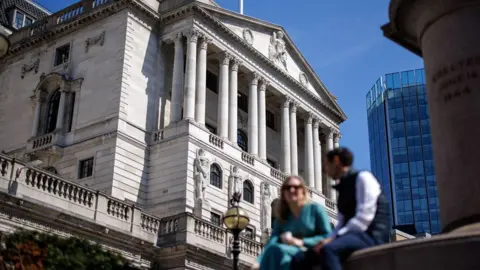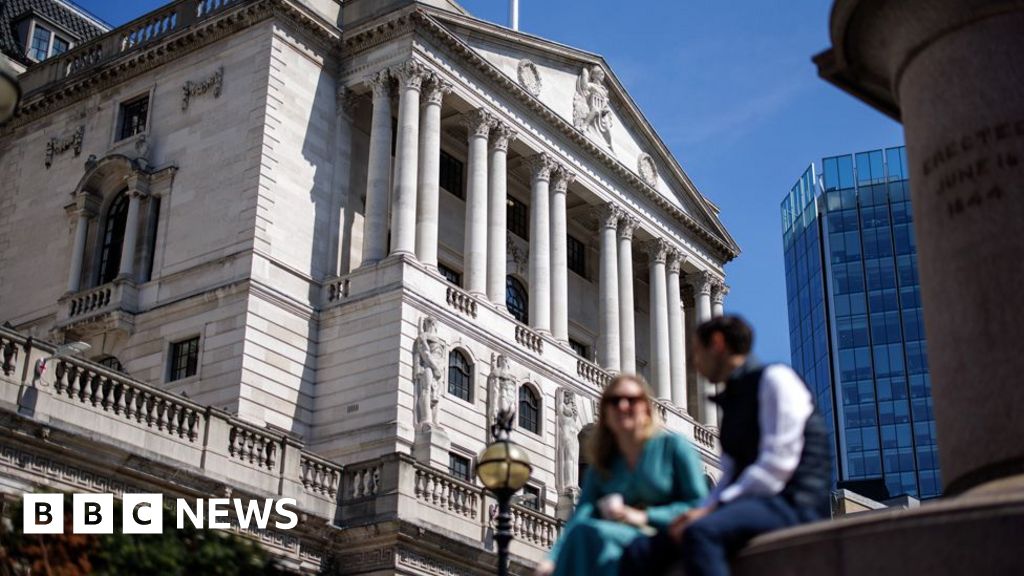 PA Media
PA MediaA decision by the Bank of England on whether to cut interest rates later is “on a knife-edge”, according to analysts.
Traders have bet on a 60% chance that the UK’s central bank will lower rates from 5.25% to 5%, but others believe another hold is on the cards.
Borrowing costs are currently at a 16-year high, putting pressure on household finances, although returns on savings are also greater.
In June, policymakers opened the door for an August rate cut, signalling that a majority of the decision makers could vote for one.
Andrew Bailey, the Bank of England’s governor, has previously said “we are on the way” to a first interest cut. It comes amid fierce speculation about whether it will happen after this meeting or at the next one in September or even in November.
The base rate set by the Bank is closely followed as it dictates the rates set by High Street banks and money lenders.
Interest rates were hiked in a bid to combat soaring price rises, known as inflation, which have hit households and businesses hard over the last few years.
High rates have led to borrowers paying more for mortgages and loans, but savers have also received better returns.
Inflation has eased in recent months and hit 2% in the year to June, which is the Bank of England’s target.
If the Bank decides to cut rates on Thursday, rates on mortgages and savings could shift.
More than half a million homeowners have a mortgage rate that “tracks” the Bank rate. A 0.25% cut could take their monthly repayments down by around £28 a month on average.
Anyone with a standard variable rate mortgage could see a £15 benefit.
Private rents are at a record high. In theory, lower mortgage costs for landlords could be passed on to tenants.
Anyone with a loan or credit card could also see their repayment costs fall.
‘Slow and steady’
On the flip side, savers have been getting a fairly good deal at the moment but could see their returns fall after the decision at midday.
Susannah Streeter, head of money and markets at investment company Hargreaves Lansdown, said Thursday’s rate decision was “on a knife edge”.
Although a few weeks ago markets were betting on a 50/50 chance of an August rate cut, they now think that probability is 60/40, she added.
“If they leave it too late, it could be a more difficult September [for the UK economy],” she said.
She added that she expected rates cuts, when they come, to be “slow and steady” after being on hold for “a significant amount of time”.
Policymakers face a balancing act when setting rates.
By making borrowing more expensive, the Bank hopes to encourage people to cut back on spending which in turn leads to demand for goods falling and price rises easing.
But if they keep rates high for too long, they risk stifling economic growth as businesses hold off on investing in production and jobs.
Russ Mould, investment director at AJ Bell, said the Bank was in effect deciding the price of money for both immediate and longer-term borrowing.
He said economic indicators such as falling job vacancies and a rising unemployment rate could prompt the Bank to cut rates.
However, if the Bank deems that wages are rising too quicky they may hold off, he added.

